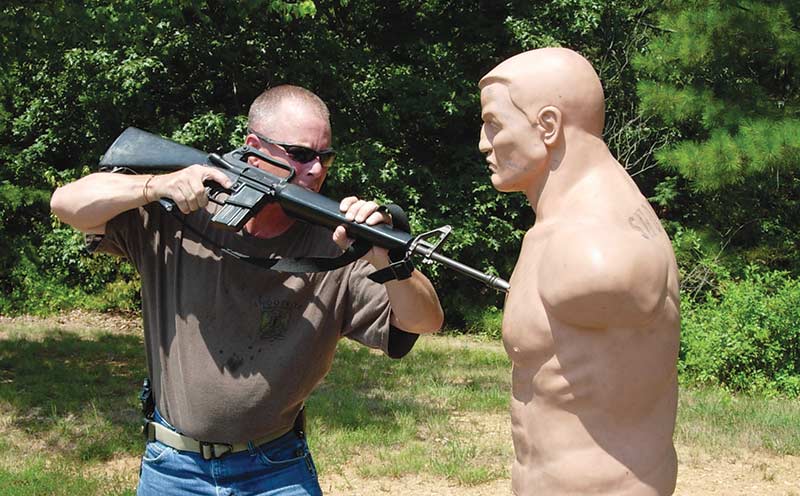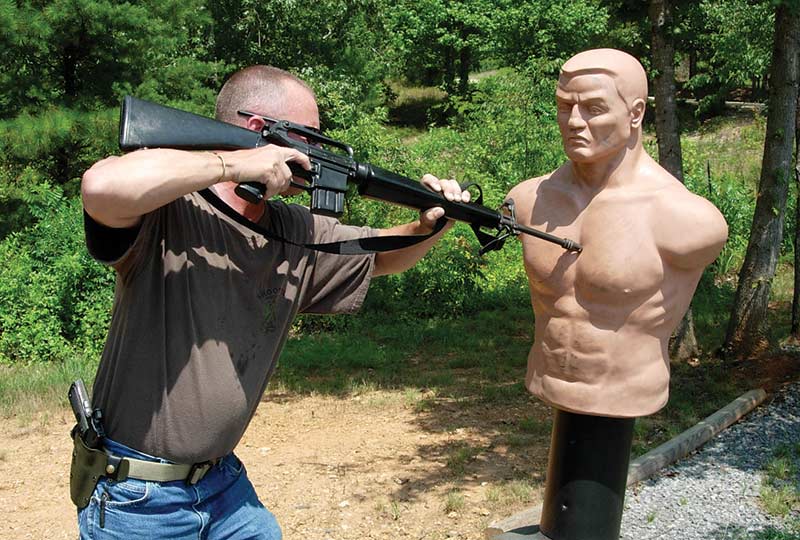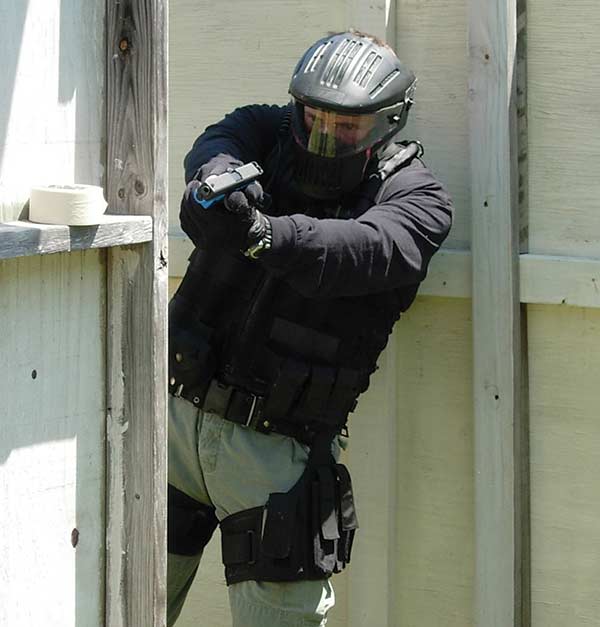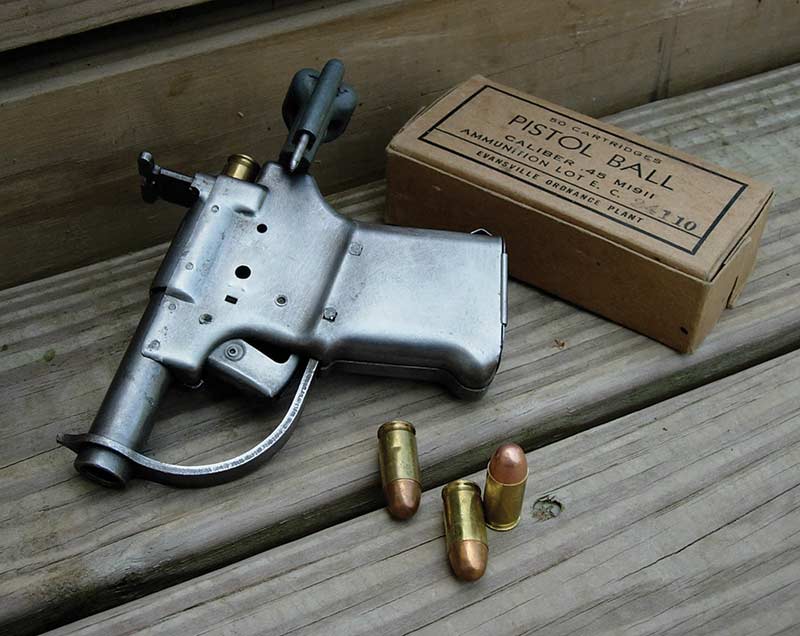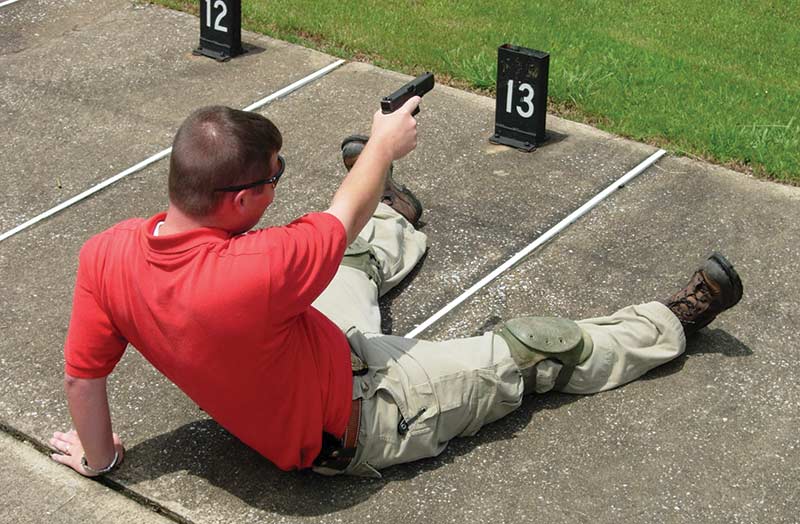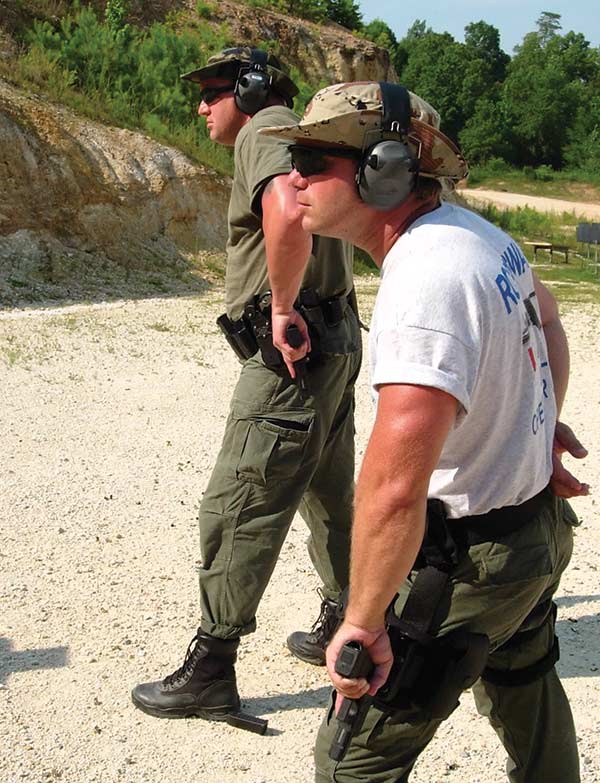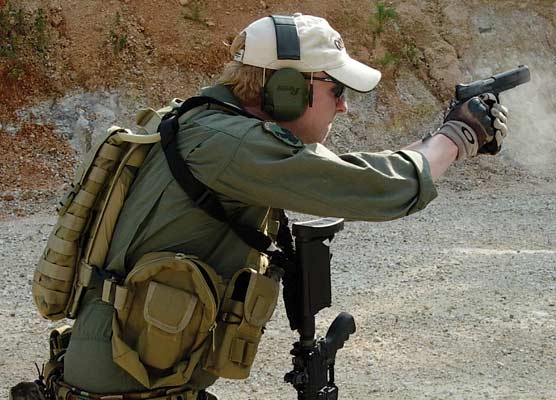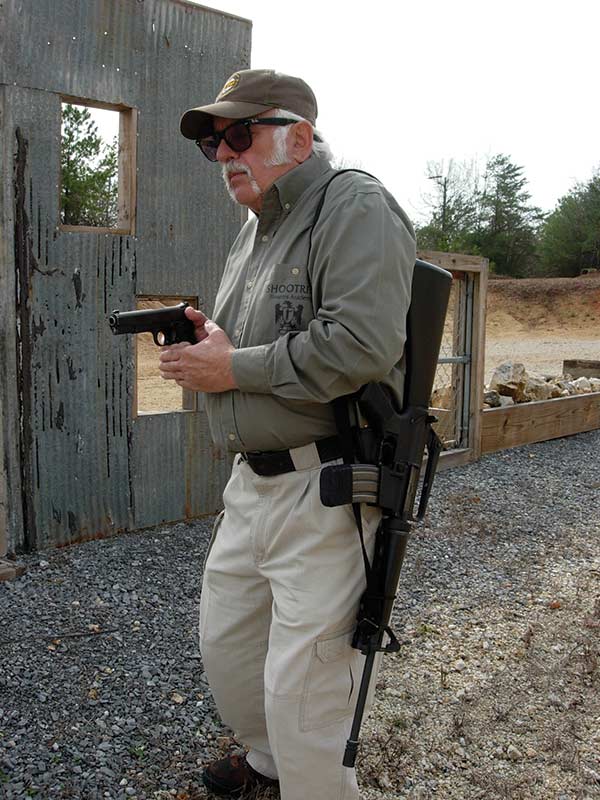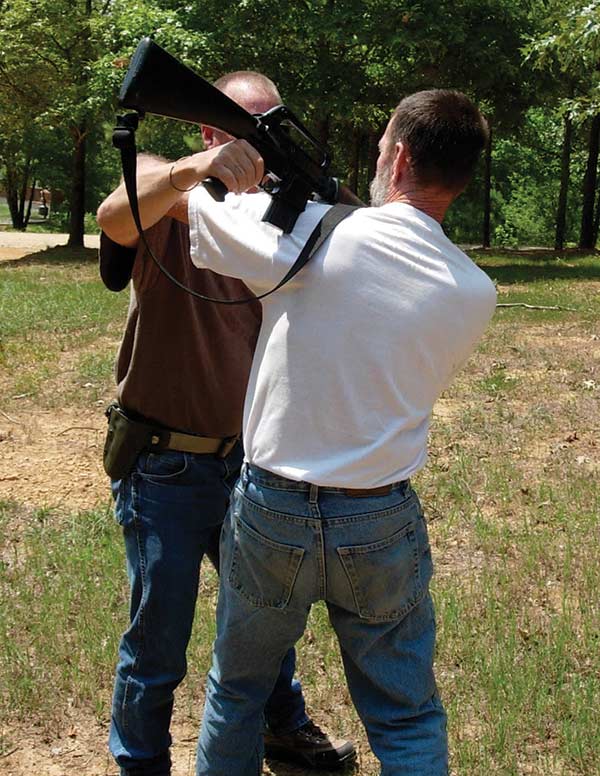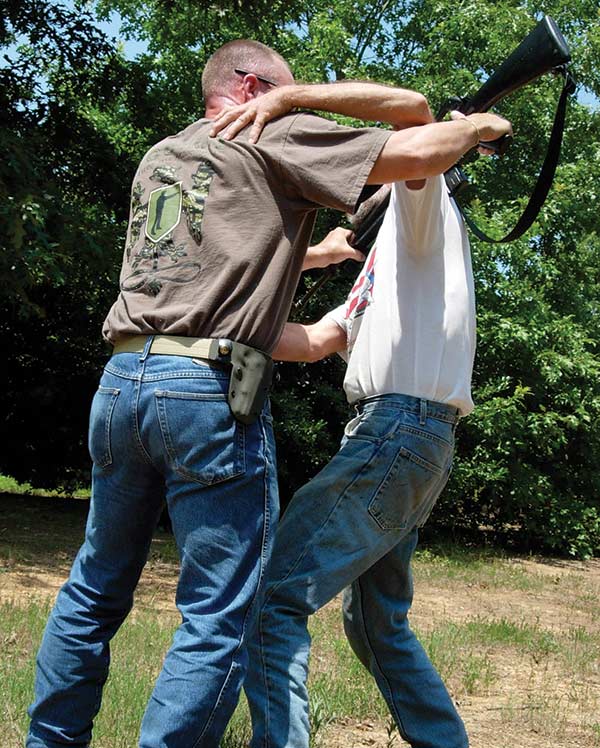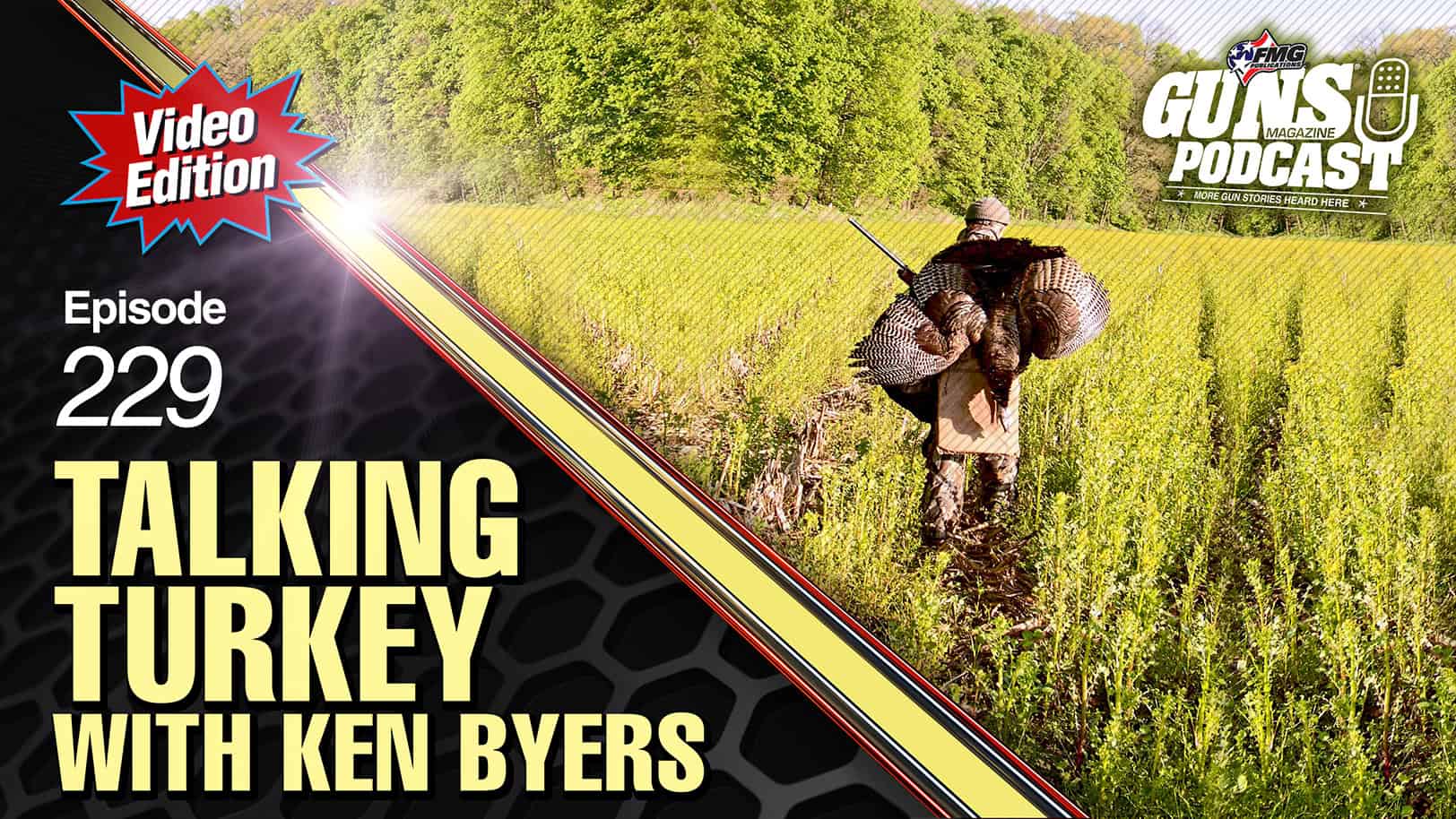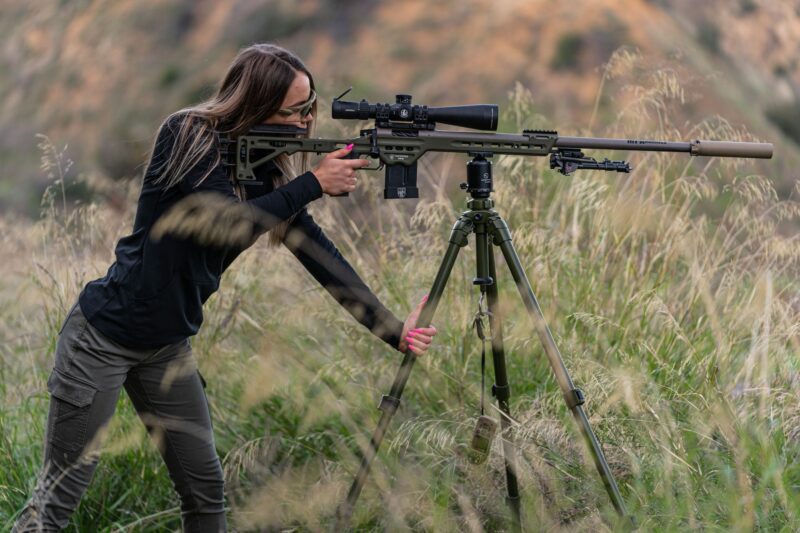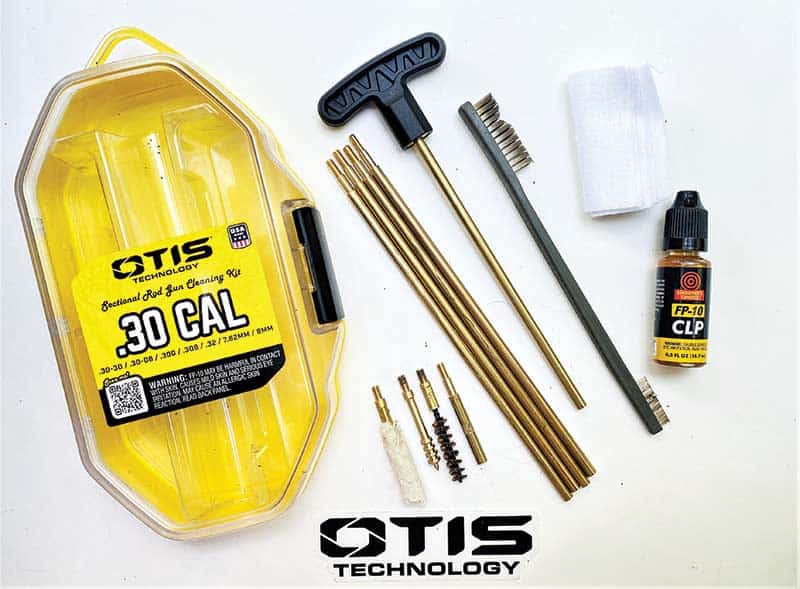Pistol Or Rifle
Making An Educated Choice
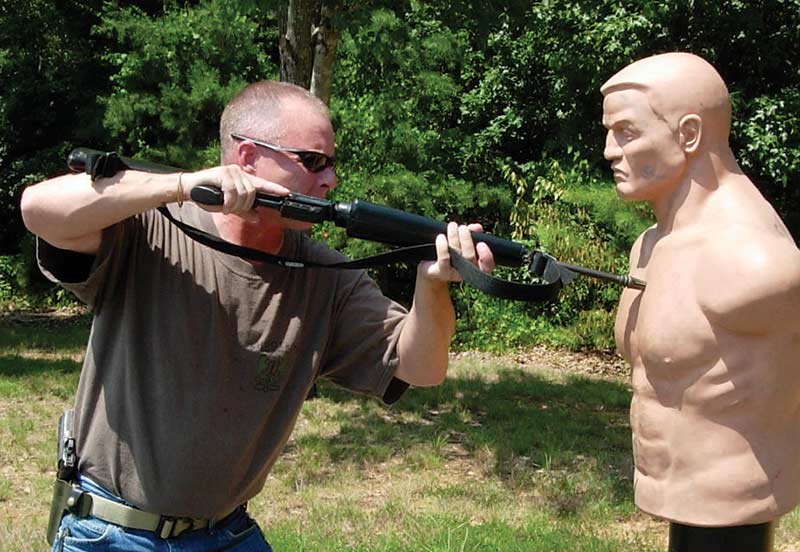
When you don’t have time or distance to transition to another weapon your rifle,
or pistol, can be used as an impact weapon. These type of strikes are very effective,
and can easily generate enough force to injure or kill. Immediately following the strike
you should create distance, performing either a transition or the actions needed to
get your firearm functioning again.

When you don’t have time or distance to transition to another weapon your rifle,
or pistol, can be used as an impact weapon. These type of strikes are very effective,
and can easily generate enough force to injure or kill. Immediately following the strike
you should create distance, performing either a transition or the actions needed to
get your firearm functioning again.
Take a moment to think back on all your previous firearms training. Chances are when you train and practice, it’s with either the pistol or the rifle.
Sure, you’ve worked a few drills in there on transitioning from the rifle to the pistol, but probably very little time has been spent actually learning to fight with both weapons, combining them into one package. To maximize our combative cap abilities we want to blend every weapon of our arsenal into one package, developing the skills and knowledge to seamlessly flow from one weapon to another as necessary.
Modern Technique
In the mid 70s Jeff Cooper unveiled his Modern Technique for the pistol. Cooper combined years of study, research, and various techniques used by top shooters into a comprehensive and revolutionary package for fighting with the handgun. Clint Smith began teaching his Urban Rifle doctrine, using the AR carbine for self-defense and law enforcement situations in the early 80s. Clint informed me that after
the infamous F.B.I. Miami firefight this “class really took off, with lots of interest.” Urban Rifle courses are now the first thing on Thunder Ranch’s schedule to fill up.
Today, the majority of instruction being offered for the pistol and carbine is based on the foundations laid out by these two men. The problem, as mentioned above, is our tendency to separate the two weapons, both mentally and physically. We need to combine Cooper’s Modern Technique for the pistol and Clint’s Urban Rifle doctrine for the carbine into one package. But, to do this successfully we must understand each weapon’s advantages and disadvantages, and the theories behind their application.
Without a solid grasp of these subjects, combining the two weapons is like mixing fire and gas. Toss a lit match at a pan of gas and you get uncontrolled explosion. Combine fire and gas in an internal combustion engine and you generate horsepower that you can harness.
Handguns
The pistol has traditionally been considered a defensive weapon. Its major advantage is its size and portability. For law enforcement it’s always carried on the duty belt (not to mention another one or two tucked away for backup). The pistol’s size allows it to be concealed easily, providing the average citizen a method of covertly carrying a firearm for self-defense. Its small size makes it extremely useful in tight, confined environments. And, if you are injured in one hand or arm — more common in fights than people realize — you can still employ a pistol effectively one-handed.
Carbine
The carbine is normally considered an offensive weapon. It’s still used in defensive encounters, but it allows you to implement a more aggressive response if needed. The major advantages of the carbine are its terminal ballistics and accuracy. When it comes to stopping threats a rifle will always outperform the pistol, assuming we’re talking about high velocity rifle cartridges and not a pistol round fired from a long barrel.
With the carbine you can accurately engage threats from arms reach out to 300 yards or more. A carbine’s magazine carries more rounds than a handgun, which isn’t a license to shoot more, but in a drawn out encounter you’ll have to reload less. Last, but not least, we can’t ignore the psychological effects of the rifle. As Col. Grossman points out in On Combat, although archers were more accurate, had greater
range, and faster rate of fire than the smoothbore muskets of their time, bowmen were replaced by firearms due to the psychological effects of the noise, smoke, and chaos created by a line of muskets.
Credibility
Rifles still command a lot of respect on the street. Sgt. Chase Jenkins, Rainbow City, AL said he couldn’t count the times in seventeen
years of duty where he “was covering a threat with a handgun and had them look directly into [his] face, smirk, and take off running.” With a rifle he says he can’t remember, “covering a wart of society with the long gun and not getting compliance.”
The pistol and carbine also have disadvantages. The pistol is underpowered, likely requiring multiple rounds to stop an attacker. Compared to the carbine, handguns have a limited magazine capacity. Then, as mentioned above, there is a general lack of respect for pistols. The
best use of a pistol, as Clint Smith says, is to fight your way to a rifle. A prime example of this principle is the Liberator pistol that was mass produced and dropped behind enemy lines during WWII. The sole purpose of this single shot pistol was to shoot an enemy, at extremely close quarters, in order to obtain a better weapon.
The big disadvantage of the carbine is size. Patrol officers can’t carry their rifle on every traffic stop or call they respond to. The armed citizen can’t sling up their AR for shopping at the grocery store. Size may also be an issue depending on the environment. A rifle is extremely difficult to maneuver inside confined or restricted areas. And, while the carbine can be operated one-handed if injured, it isn’t done as easily as with a pistol.
Pros And Cons
If you look at the advantages and disadvantages of each weapon system you’ll see when combined they mesh together nicely. It’s a yin/yang kind of thing. So, with this in mind we need to look at the theory and techniques required to operate with both weapons, and how the situation and environment determines the best weapon for that particular conflict. “Fighting,” as instructor Scott Reitz is fond of stating, “is problem solving at high speeds.” You assess the situation, choose the proper solution, and implement that action, all within a short time frame.
Let’s say your pistol is holstered and the rifle slung on your body. A sudden attack occurs; the threat is close. Since your prior training has included timed drills you already know the quickest way to get hits on the threat is with the pistol. This is usually the case even when the rifle is hanging in front of your body on a tactical sling. Here we’re dealing with the laws of physics. The rifle’s length and weight requires more energy and time to get it onto target compared to the lighter and shorter pistol.
You’re in a fight with the threat just a couple of cars away, when your rifle stops firing. It doesn’t matter whether it’s an empty magazine or a malfunction; the quickest response to get shots on the threat is to transition to your handgun. From running a lot of students through timed drills I can tell you transitioning to your pistol is roughly 30 to 50 percent quicker than dealing with the
rifle. Just remember when you go from rifle to pistol, you’re stepping down in stopping power.
Searching
A mobile home must be cleared, searching it for a possible armed threat. It’s tight, with narrow hallways, small rooms stuffed with furniture, beds to check under and closets to clear. Searching this environment is going to be accomplished more efficiently with your pistol. And with the pistol, if the threat does get in real close, you’ll probably be able to defend against any disarming techniques better than if you were using a rifle.
Now let’s flip the coin over and look at situations where the rifle is your best choice. You have prior warning that a fight is possible. Avoidance and escape are not options, and you can’t wait for backup or call in fast movers to pound ‘em with smart bombs. Take your rifle. Remember, it’s hard to predict what your fight will involve. Although there are plenty of statistics out there, they only allow us to judge present conditions, not predict how our fight will unfold. Documentation tells us there’s likely to be more than one threat to deal with, but it rarely mentions the fact you might have 3000 possible threats just four blocks from your home. That’s exactly the situation some of my students faced down on the Gulf Coast during the aftermath of hurricane Katrina. A rifle can be a real comfort during these types of conditions, and it’s always better to have it and not need it than to need it and not have it.
Transition
We talked about transitioning to the pistol when your rifle stops functioning, but what most people don’t consider is when you have the opportunity you should transition back to the rifle, performing the necessary actions to get it operating again. Remember, you don’t know how long the fight will last. Maybe the threat on the ground gets up, spitting out a mouthful of blood, announcing he “ain’t done fightin’ just yet.” Or, the guy that ran around the corner returns, and now he’s got friends with him. Regardless of what might happen I’d rather be standing ready with a rifle than a pistol. Also keep in mind the fight isn’t over until everyone and everything is locked down and secured. For the officer working a large rural area it may take a while for backup to arrive. For the homeowner, depending on where you live, it could be the same. I’ll hold my position with a rifle.
Then there’s the “battlefield pickup.” I’m armed with my pistol, fighting multiple threats. They have rifles. If I get the opportunity to “acquire” a rifle during the fight, I’m picking it up to use against the other threats. This is a really good reason to know how to operate the various other type rifle systems. There are several hundred million AR, SKS and AK type rifles out there, so your chances of coming across one are pretty high.
Brain Power
The key to flowing from one weapon to another is developing your mental skills. Buy all the gear you can afford. Strap on as much tactical stuff as you can carry. You may look the part, but if you don’t know how to use that gear it’s worthless. The ability to deploy multiple weapons provides a tremendous advantage, but the mental demands increase exponentially. Hick’s law tells us that as the options we have to choose from increase so does our response time. Plus, re-learning or modifying existing behavior is much more difficult than starting from a clean slate.
One of the more popular classes we offer at Shootrite is our Handgun/Carbine course, which covers the mental and physical aspects of working with both weapons. After practicing transitions it normally takes students about a day before they start remembering to switch from rifle to pistol when the rifle goes down. Their immediate response is to reload or clear the rifle because that’s what they’ve trained and practiced to do. Initially they have to stop, think, and then react. With time these actions become smoother and quicker, but to execute them efficiently requires plenty of repetitions.
Beyond the techniques of how, we also have to examine time and distance factors, the “when” part of the equation. If my rifle stops functioning, but I’ve got good cover and some distance between me and the threat, then getting the rifle functioning might be better than transitioning to the pistol. Or maybe I’m working in a team format with partners to cover me while I get the rifle operational.
Alternative Actions
In addition to knowing how and when to flow between weapons, we need to consider alternative actions. What if the threat is danger close and you don’t have time to transition to other weapons? Firearms can do more than just launch bullets. The pistol or rifle can be used as an impact weapon. With the proper techniques, weapon strikes are very effective, and can buy you time to pursue other options. Weapon strikes should be considered lethal force, because you can definitely generate more than enough power to kill.
A rifle can also be employed as a lever to perform take downs and restraint holds. We need to think outside the box, investigating the multitude of ways our weapons can accomplish the tasks we’ll face during a fight.
There is a lot to study and practice, and we haven’t even discussed fighting in low-light environments, which is where most violent confrontations take place. Here again, consider all your training and practice. How much of it has been in lighted conditions compared to lowlight environments? Working in the dark with hand-held and weapon mounted lights changes a lot of things. You’re fighting with a rifle that has a light mounted on it. The rifle ceases to function, so you’re transitioning to the pistol, but you still need to use the rifle’s light. Now you are literally working with both weapons at once. Every time you add another factor or two to the equation it gets more complicated. Developing these various skills before you need them is highly recommended.
When I talk to people about fighting they usually already have a preconceived notion of how their fight will go. “My wife and I have been practicing,” they explain. “I’m going to do this while she handles that, and then we’ll execute this technique,” and so on. The problem is fights never go like you plan.
As Sgt. Rory Miller states in his book, Meditations On Violence, “You don’t get to pick what kinds of bad things will happen to you.” Every fight is different. Your strategy and tactics must match your weapons, your abilities, and the unique circumstances of that particular situation.
Which Weapon
I have a rifle and a pistol. My “primary” weapon may change back and forth during the course of the fight. In fact, my primary weapon might be the knife in my pocket or a swift kick to the knee of my threat. There are a lot of weapons at my disposal, and I don’t limit my actions by the way I think. The swordsman Mushasi tells us in The Book of Five Rings that in a fight to the death you want to employ every weapon to the utmost. This is especially true of your most valuable asset — your mind. If you’re not thinking then all you’re doing is reacting, which means you’re always behind in the action. That’s a hard position to win the fight from.
Although there is a certain flow or direction of action within combat, fights are ugly and chaotic, even for the experienced. To prepare for the realities of combat you need a lot of training and practice. Learn the intricacies of all your weapons, their advantages, disadvantages, and the skills required to flow between them. At the same time, assess your physical and mental abilities, and just as importantly, identify your personal limitations. Focus hard on the fundamentals. Practice for the worst-case scenarios. When it comes time to fight, make sure you’re thinking, fighting smartly and taking full advantage of every weapon you have.

Sign up for the Personal Defense newsletter here:
